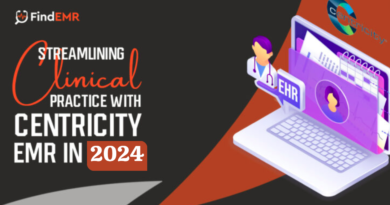Why Functional testing is essential part for an end-to-end digital product?
Functional testing is one of the most important processes in application or software testing because it quantifies each and every purpose of an application separately. In order to confirm that the application performs as intended in real-world circumstances and that it satisfies the necessary criteria, functional testing is carried out on it.
Application functional testing is by far the quite widely recognized testing technique in all significant software development firms, and it is used by the vast majority of them. Despite the fact that huge amounts of money have been already spent on automation systems to assist the test automation services method, businesses are still failing to achieve high-quality software development and implementation. Over 80 percent of software testing is currently performed manually, despite the significant development in automation.
Finding out what has been tested and what has not been tested is the most difficult task faced by most businesses, and the time commitment required for quality management functional testing is one of the biggest significant problems when it comes to fulfilling application delivery deadlines.
In Functional Testing, what exactly do you test?
- Functional testing encompasses evaluating database functioning, user interface performance, programs, and cyber security.
- The term “mainline operations testing” refers to the process of testing an application’s primary functionalities.
- Usability at its most fundamental level. It refers to basic usability testing in which the tester determines whether or not a user can travel through the app without encountering any problems.
- Accessible. Validation of the program’s usability for the intended audience (the user).
- Circumstances that result in an error. A tester checks to see that the appropriate error messages appear when they are needed. The user must be able to comprehend the error messages that are shown. If anything goes wrong, the user should get a clear notice about the mistake and be able to comprehend what is wrong and what is going to happen after that.
Non-functional testing comes first, followed by functional testing:
Testing the performance is carried out from two different perspectives:
- Based on needs: In this sort of testing, requirements and, as a result, tests are prioritized based on the risk criteria that were established. In this manner, the most crucial tests are carried out without a glitch.
- Company procedure testing: In this sort of testing, the situations are those that would be encountered in the course of normal business operations. It entails the application of company operations.
The method of functional testing is similar to any other testing procedure in that it comprises the supply of inputs, the observation of outputs, and finally the comparison of the actual and hypothetical outcomes obtained. Though it seems to be simple to perform, it takes time, practice, and dedication to become an expert at it!
Let’s see some of the best practices of functional testing in the digital world
Day by day functional testing demand is going high, the functional testing method is tested for each function of the website, software, and mobile application that work in with specification and requirement. Here software testing team explains the best practices of functional testing in the global digital market.
1. Obtaining knowledge before testing – Before you begin to conduct testing, you should be well familiar with the subject matter under consideration. You must be aware of the whole strategy before proceeding with it. The knowledge regarding critical processes and user instructions is in the possession of the development group. First and foremost, you should gather this information and thoroughly test the important components.
2. Behave in the manner of an actual user – Testing for software quality demands the objectivity of the testers. As a result, while testing a new application, testers must behave as if they were actual users, mimicking their actions and determining whether or not the app fits their requirements.
3. The test is being run – Then there’s the actual execution. Test cases must be written fluidly. If any modifications are required, they should be simple to implement. It is necessary to record the execution to facilitate future evaluation.
Why Functional Testing actually matters?
It’s easy to disregard software testing as an unnecessary drain on one’s resources (both money and effort). However, for a large number of businesses, a single little problem spun out of control. Products with terrible software errors in them may become viral, but this will be done in the wrong manner for the company. Neither the need for appropriate software testing procedures nor the difficulty of learning them the hard way is required.
It is necessary to select Automation testing services to do functional testing to ensure that the output of a program is consistent with the functional requirements and design criteria. It places a greater emphasis on the application’s exterior behavior, which is an important component of the testing process. Because testing is centered on the functionality being built, methodologies like black box testing do not need any prior understanding of the code or the performance of the program.



